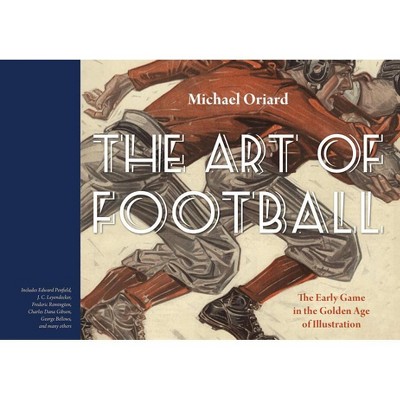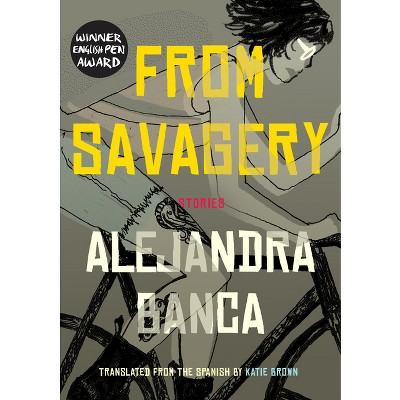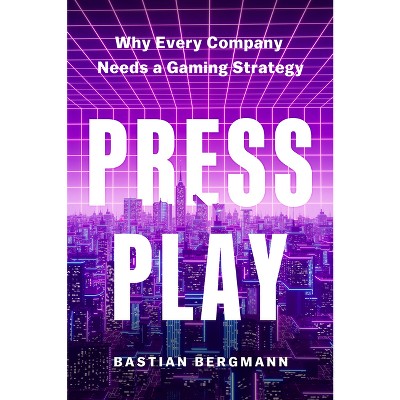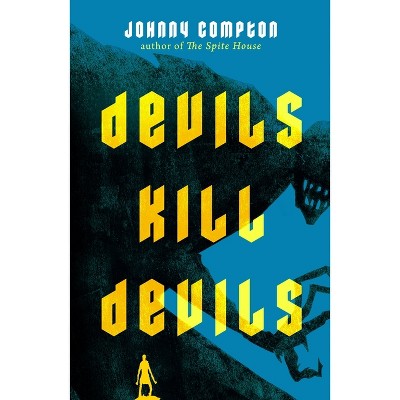Sponsored

Sanctioned Savagery - by Michael Oriard (Hardcover)
In Stock
Sponsored
About this item
Highlights
- American football was a violent sport from its beginning as a college game in the 1870s and 1880s, in part because learning how to deal with the pain and violence, to "take it," made men out of college boys.
- About the Author: Michael Oriard is a retired professor from Oregon State University and a former football player for the University of Notre Dame and the Kansas City Chiefs.
- 304 Pages
- Sports + Recreation, History
Description
About the Book
"American football was a violent sport from its beginning as a college game in the 1870s and 1880s, in part because learning how to deal with the pain and violence, to 'take it,' made men out of college boys. Michael Oriard, former NFL linebacker and professor emeritus of English, shows us that this fundamental belief persisted for more than a century, until signs of chronic traumatic encephalopathy (CTE) were found in Pittsburgh Steelers' center Mike Webster's brain. Suddenly, the cost of 'taking it' could mean long-term damage not just to the body but also to the brain. Without anyone knowing it, that risk had soared since the 1950s and 1960s, when the hardshell plastic helmet became the primary weapon for blocking and tackling, as taught by a new generation of college coaches, led by the University of Alabama's Bear Bryant. In this cultural history of football at nearly all levels--high school, college, and pro--Oriard traces the perennial tension between health and culture regarding football as reflected in what the public read in newspapers, magazines, and online. Through examining how we once felt and how we now feel about the game, Oriard challenges us to grapple with the possibility that football might be too violent, in an intolerable way"Book Synopsis
American football was a violent sport from its beginning as a college game in the 1870s and 1880s, in part because learning how to deal with the pain and violence, to "take it," made men out of college boys. Michael Oriard, former NFL linebacker and professor emeritus of English, shows us that this fundamental belief persisted for more than a century, until signs of chronic traumatic encephalopathy (CTE) were found in Pittsburgh Steelers' center Mike Webster's brain. Suddenly, the cost of "taking it" could mean long-term damage not just to the body but also to the brain. Without anyone knowing it, that risk had soared since the 1950s and 1960s, when the hardshell plastic helmet became the primary weapon for blocking and tackling, as taught by a new generation of college coaches, led by the University of Alabama's Bear Bryant.
In this cultural history of football at nearly all levels--high school, college, and pro--Oriard traces the perennial tension between health and culture regarding football as reflected in what the public read in newspapers, magazines, and online. Through examining how we once felt and how we now feel about the game, Oriard challenges us to grapple with the possibility that football might be too violent, in an intolerable way.
Review Quotes
"Even readers uninterested in the concussion crisis or ethical debates will come away with a deeper understanding of how football has developed, how it has been portrayed, and how it has portrayed itself. . . . [A] thoughtful, important book that rewards close attention."--Pigskin Dispatch
"Oriard explores the sport's violence core and how generations of Americans have learned to accept and defend it.. . . . As the hits were getting bigger, the toll on players became greater. But until recently, nobody knew the awful price that they were paying to entertain the masses."--Irish Times
"From Oklahoma drills to coaches and spectators encouraging players to 'dish out' punishment on the field, the history of football has been steeped in the celebration of pain and injury. Michael Oriard explores fundamental questions about Americans' changing comfort levels with violence, which has very real and debilitating health consequences."--Kathleen Bachynski, author of No Game for Boys to Play
"Michael Oriard is one of the leading voices in the critical analysis of American football. His work combines a deep knowledge of the game gleaned from his years as an athlete with his assiduous research and close reading of the culture and industry of the sport, both amateur and professional. Sanctioned Savagery continues this signature approach, giving readers a timely look at how we've become numbed to the breathtaking violence in football and what that means."--Theresa Runstedtler, author of Black Ball
About the Author
Michael Oriard is a retired professor from Oregon State University and a former football player for the University of Notre Dame and the Kansas City Chiefs. He is the author of six previous books about football, including Reading Football, King Football, and Brand NFL.
Shipping details
Return details
Trending Non-Fiction






Discover more options





